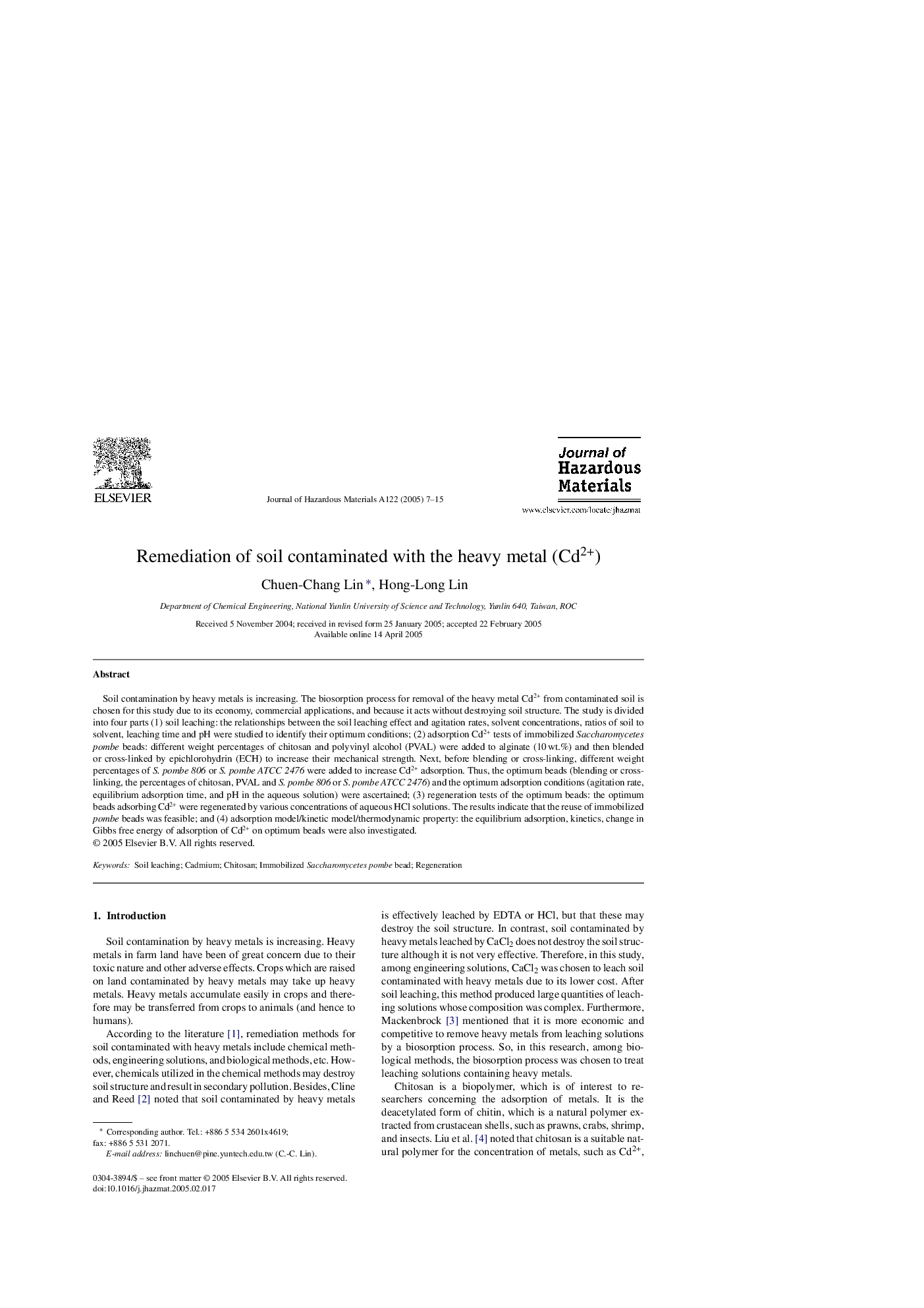| Article ID | Journal | Published Year | Pages | File Type |
|---|---|---|---|---|
| 9674231 | Journal of Hazardous Materials | 2005 | 9 Pages |
Abstract
Soil contamination by heavy metals is increasing. The biosorption process for removal of the heavy metal Cd2+ from contaminated soil is chosen for this study due to its economy, commercial applications, and because it acts without destroying soil structure. The study is divided into four parts (1) soil leaching: the relationships between the soil leaching effect and agitation rates, solvent concentrations, ratios of soil to solvent, leaching time and pH were studied to identify their optimum conditions; (2) adsorption Cd2+ tests of immobilized Saccharomycetes pombe beads: different weight percentages of chitosan and polyvinyl alcohol (PVAL) were added to alginate (10Â wt.%) and then blended or cross-linked by epichlorohydrin (ECH) to increase their mechanical strength. Next, before blending or cross-linking, different weight percentages of S. pombe 806 or S. pombe ATCC 2476 were added to increase Cd2+ adsorption. Thus, the optimum beads (blending or cross-linking, the percentages of chitosan, PVAL and S. pombe 806 or S. pombe ATCC 2476) and the optimum adsorption conditions (agitation rate, equilibrium adsorption time, and pH in the aqueous solution) were ascertained; (3) regeneration tests of the optimum beads: the optimum beads adsorbing Cd2+ were regenerated by various concentrations of aqueous HCl solutions. The results indicate that the reuse of immobilized pombe beads was feasible; and (4) adsorption model/kinetic model/thermodynamic property: the equilibrium adsorption, kinetics, change in Gibbs free energy of adsorption of Cd2+ on optimum beads were also investigated.
Related Topics
Physical Sciences and Engineering
Chemical Engineering
Chemical Health and Safety
Authors
Chuen-Chang Lin, Hong-Long Lin,
